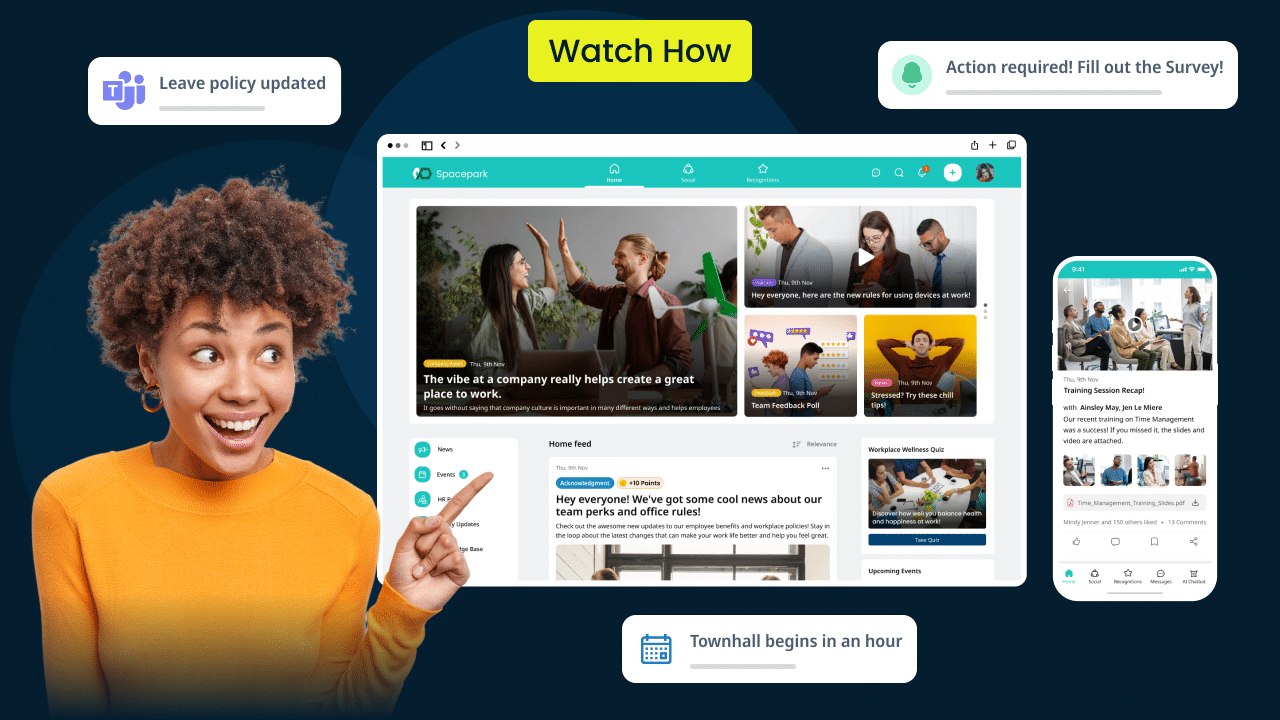In the world of fast-paced business, effective communication is essential to running being a successful business. Whether employees are working at a distance, on site, or in a hybrid structure the seamless communication is vital to increase productivity and improve engagement. This is where business communication software plays a critical role. Companies who invest in internal communication software can reduce workplace stress and establish a culture that promotes openness, collaboration and inclusiveness.

Image credit: hubengage.com
If you are still using old email systems, chat apps that don’t work, or communications channels which are a mess, it might be an ideal time to think about modern platforms to improve internal communication. They can streamline your conversations and align your employees.
Businesses require sophisticated internal communication tools
The days of bulletin boards and email communication with employees are long gone. Today, businesses are operating in a world of instant messaging, real-time collaboration, and online workplaces. With the wrong internal communication tools, companies are at risk of miscommunication, disengagement, and reduced effectiveness.
1. Motivating employees
In the modern workplace to keep employees happy and motivated is a big issue. Internal communication software that is organized and well designed assures that employees regardless of their location feel heard and included. Features like:
Real-time announcements.
Interactive feedback polls.
Employee Recognition Programs
Communication platforms that are mobile-friendly
Assisting companies in creating a feeling of belonging among their employees will lead to greater productivity and satisfaction at work.
2. Reduce Workplace Confusion and Improve the clarity of work
When employees don’t receive clear communication, misunderstandings happen. This causes delayed deadlines, work that is duplicated, and a sense of frustration. Software for business communications:
Centralized information sharing – Employees can access documents, updates and other resources through one shared space.
Task and project tracking tools – Everyone knows their role and what expectations are placed on them.
Clearer workflows – Reduces bottlenecks and ensures projects move effortlessly.
Companies that implement structured internal communication platforms find that employees perform more efficiently and with greater confidence.
3. Transparency and Culture in the Workplace
Open communication and trust are key to an effective and healthy culture in the workplace. If employees are aware of company goals, updates, and other changes, they’ll be more involved and dedicated to the company’s mission.
Modern software for internal communication come with features like:
Leadership video messages – Direct communication from executives to employees.
Town halls, Q&A meetings for employees – promoting two-way communication.
Recognizing and appreciation programs – acknowledging employees for their dedication to work.
In fostering an honest and open dialogue, businesses can reduce staff turnover and build an engaged workforce.
4. Supporting Remote & Hybrid Work Models
Traditional communication methods no longer suffice, as more companies are moving to remote or hybrid working. Teams need immediate access to documents, meetings, and conversations no matter where they are working.
Cloud-based software to facilitate internal communications can:
Collaboration can be achieved across time zones.
Document sharing made simple and co-editing is done in real time.
Virtual meetings are possible using video conferencing.
Mobile-friendly apps that allow messaging on the go.
Businesses that use the internet to communicate with remote teams are more productive and collaborated as compared to those that still rely on old communication methods.
5. Improvements to Crisis Management & Business Continuity
Emergencies can occur at any moment, whether it is an cyber-attack, disruption to the market or a restructuring of a business. Employing a robust communications software for business guarantees that employees receive updates in real time as well as safety guidelines and other instructions during an emergency.
Modern tools for internal communications offer:
Push notifications instantly for alerts that are critical
Automated messaging workflows that guide employees through difficult situations
Centralized knowledge bases, with emergency protocols
An organized business will minimize disruptions, maintain productivity, and inform employees in the case of an unexpected incident.
The Future of Internal Communication Software
As technology evolves, also do expectations regarding the business communications software. Businesses that make investments in AI-powered internal communication platforms are gaining an edge through automation of repetitive tasks as well as analyzing employee engagement data, and personalizing communication strategies.
Some emerging trends include
AI chatbots to provide instant support for employees.
Analysis of sentiment to assess workplace morale.
Dashboards that are interactive, with real-time analytics of communication.
The shift toward smart and intuitive internal communication software can help businesses build stronger and more connected teams, while increasing overall efficiency.
Final Thoughts: Choosing the best internal communication platform
If your business is having issues with poor communication and disengaged employees or disconnected workflows perhaps it’s the time to upgrade your internal communications tools. The ideal business communication software not only helps teams stay connected, it also transforms the entire workplace into an in-between zone of transparency, collaboration, and engagement.
For companies that wish to stay competitive, keep the most talented employees, and foster a lively workplace culture, investing in the latest internal communication software has become an essential requirement.
Are you looking for the best platform for internal communications within your organization? Begin by looking for solutions that allow real-time communication along with mobile accessibility, collaboration with leaders, and centralized information sharing, since good communication leads to great success.
